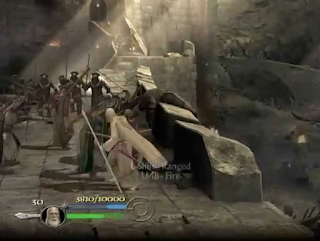On Twitch, it’s easy to become discouraged when things don’t match your expectations. After however many days you’ve been streaming, your shows may not look the way you wanted them to, maybe you’re not getting the kinds of chat interactions you’d hoped for, or you could just feel a general sense of dissatisfaction. This is normal. And it’s a good thing. No matter what you expected streaming to be like, or what milestones you thought you’d reach in a certain amount of time, your content isn’t going to feel finished anytime soon. But more importantly, it shouldn’t feel finished. If you want to stay happy with what you’re doing, accept that your stream is always a work in progress.
➢ DON’T LOSE HOPE
Peter Jackson’s incredible fly-on-the-wall Beatles documentary, Get Back, is all about works in progress. In trying to create a new album, the band sat down in the studio and simply jammed, for days and weeks on end. Over 60 hours of film and 150 hours of audio were recorded during these sessions, in which the fab four continuously pressed on through the mediocrity and dejection of partially-finished songs until they finally arrived at Let It Be, the legendary album we know today. There are hundreds of fantastic moments from this epic three-part documentary which communicate my point, but the one that stuck out most to me involved George Harrison tinkering with his song Something. The music and lyrics are pretty much all there, but one or two words keep tripping him up. “Something in the way she moves, attracts me like _____” He just can’t get figure out that one phrase, and every time he sings the song he’s forced to replace that empty space with filler, while he and the band flesh out the rest of the arrangement. “Attracts me like a cauliflower,” or “like a pomegranate” certainly don’t live up to what would eventually become one of the most beautiful songs ever written, but George doesn’t allow this small creative hiccup to stifle his ability to work. During this moment, he admits that he had been stuck for the past six months, and the song itself wouldn’t even be released until the next album, Abbey Road, in the later half of that year. But I think we can all be grateful that he didn’t lose hope while his song was a work in progress.

Rome wasn't built in a day.
For a creative person, it can be uncomfortable when your project stays in a state of limbo for so long. We streamers can certainly feel that way when our cameras don’t look up to par, or we’re unable to perform in competitive games at the level we’d like. If we stay in that rut long enough, we might even throw up our arms and decide it’s time to cut our losses. Virgil, the ancient Roman poet, died requesting that his friends destroy his magnum opus before it could see the light of day. If not for the intervention of others, including the emperor of Rome himself, The Aeneid would have been completely lost to time. This story went on to inspire countless authors, playwrights, poets and other storytellers the world over, and Virgil’s work is generally viewed alongside the epics of Homer in its importance to Western literature. Though there are varying accounts, it’s predominantly believed that Virgil wanted his manuscript burned because was unhappy with its unfinished state. Judging by its polish and completeness, the progress was somewhere around 99%, but that one percent nearly caused the destruction of the whole project. Don’t let this happen to you. Think of the benefit the world received from Virgil’s creation, even if it was not technically finished. Your streams could be bringing happiness and inspiration to others in this same way, even if you don’t think they’re as good as they could be.
➢ LOVE THE UNFINISHED
Are there any aspects of your streams that have been bothering you because they’re not yet up to snuff? Have you considered what your stream would be like when you do attain that quality standard? Yes it would look great to this version of you, but the more experienced version of you would hope for more. This finish line will become another starting point, and the cycle would begin again. This is not to say that you should give up all your ambitions and consider your streams ‘finished’ right now- without ambition, George Harrison would never have released his song, and Virgil wouldn’t have started on The Aeneid in the first place. So keep those ambitions, and keep working toward your goals. But don’t fool yourself into thinking that reaching those goals will mean something is ‘finished.’ Instead, accept that your stream will always be a work in progress, and enjoy the ride.










